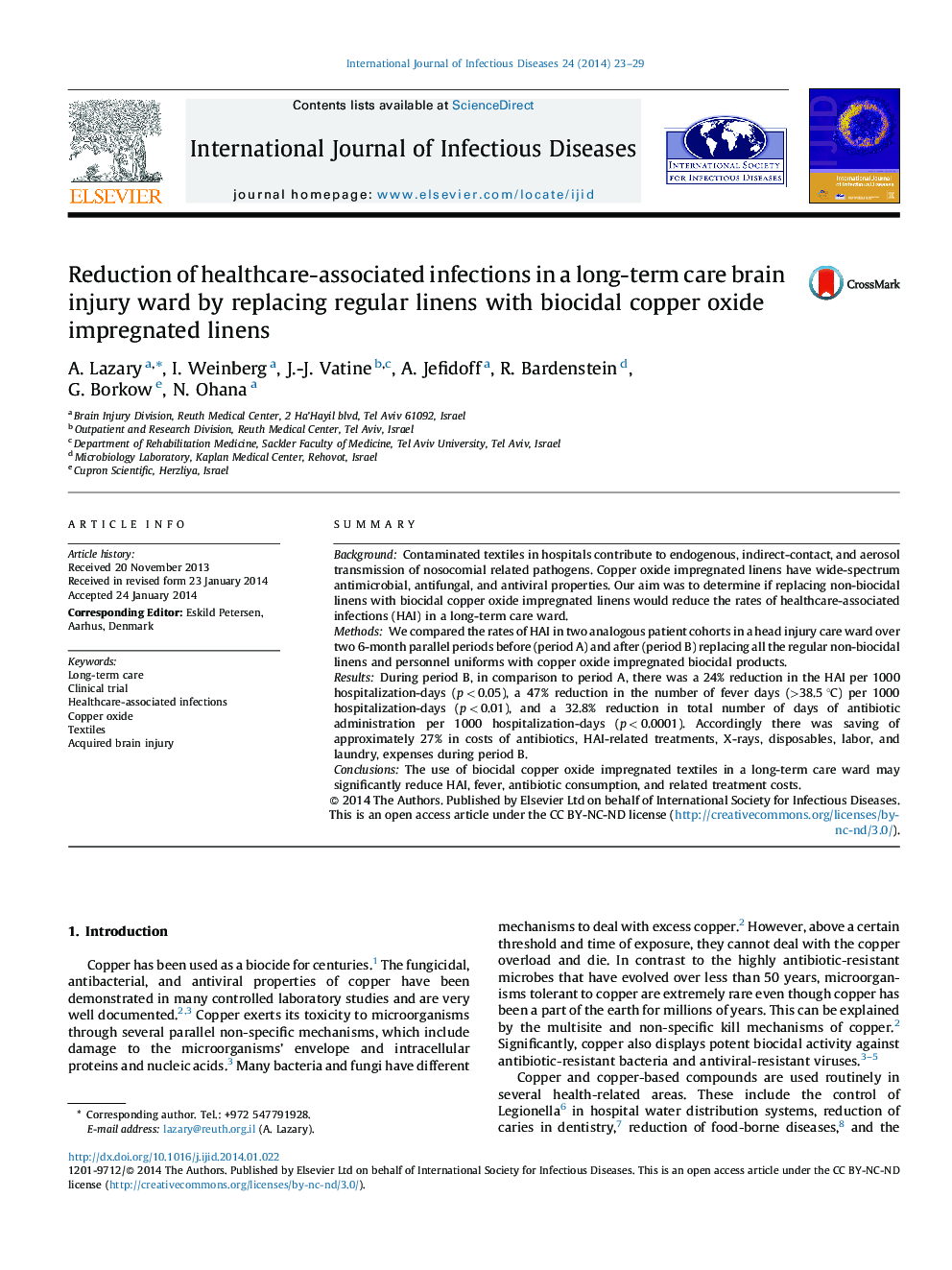| Article ID | Journal | Published Year | Pages | File Type |
|---|---|---|---|---|
| 3362539 | International Journal of Infectious Diseases | 2014 | 7 Pages |
SummaryBackgroundContaminated textiles in hospitals contribute to endogenous, indirect-contact, and aerosol transmission of nosocomial related pathogens. Copper oxide impregnated linens have wide-spectrum antimicrobial, antifungal, and antiviral properties. Our aim was to determine if replacing non-biocidal linens with biocidal copper oxide impregnated linens would reduce the rates of healthcare-associated infections (HAI) in a long-term care ward.MethodsWe compared the rates of HAI in two analogous patient cohorts in a head injury care ward over two 6-month parallel periods before (period A) and after (period B) replacing all the regular non-biocidal linens and personnel uniforms with copper oxide impregnated biocidal products.ResultsDuring period B, in comparison to period A, there was a 24% reduction in the HAI per 1000 hospitalization-days (p < 0.05), a 47% reduction in the number of fever days (>38.5 °C) per 1000 hospitalization-days (p < 0.01), and a 32.8% reduction in total number of days of antibiotic administration per 1000 hospitalization-days (p < 0.0001). Accordingly there was saving of approximately 27% in costs of antibiotics, HAI-related treatments, X-rays, disposables, labor, and laundry, expenses during period B.ConclusionsThe use of biocidal copper oxide impregnated textiles in a long-term care ward may significantly reduce HAI, fever, antibiotic consumption, and related treatment costs.
